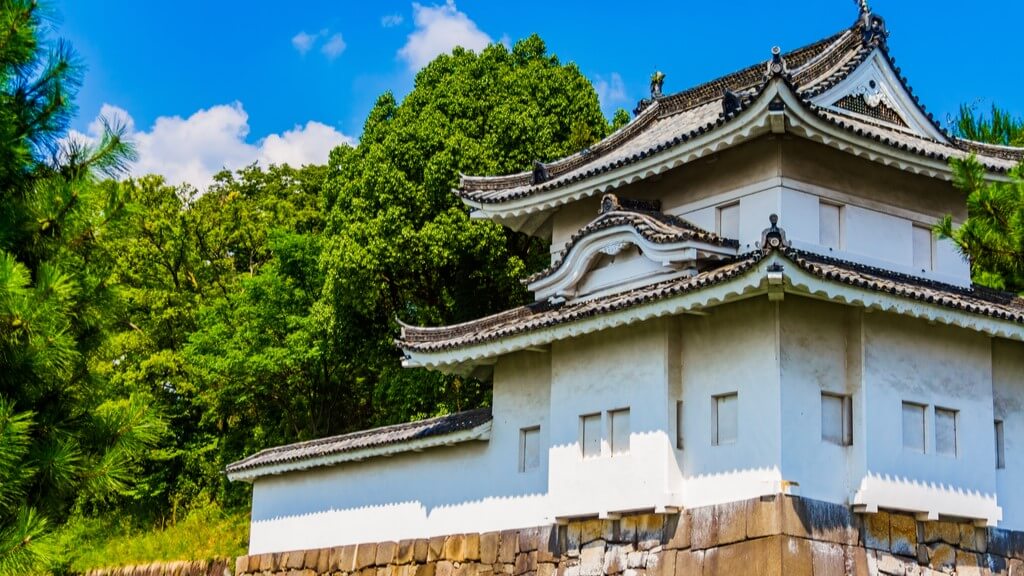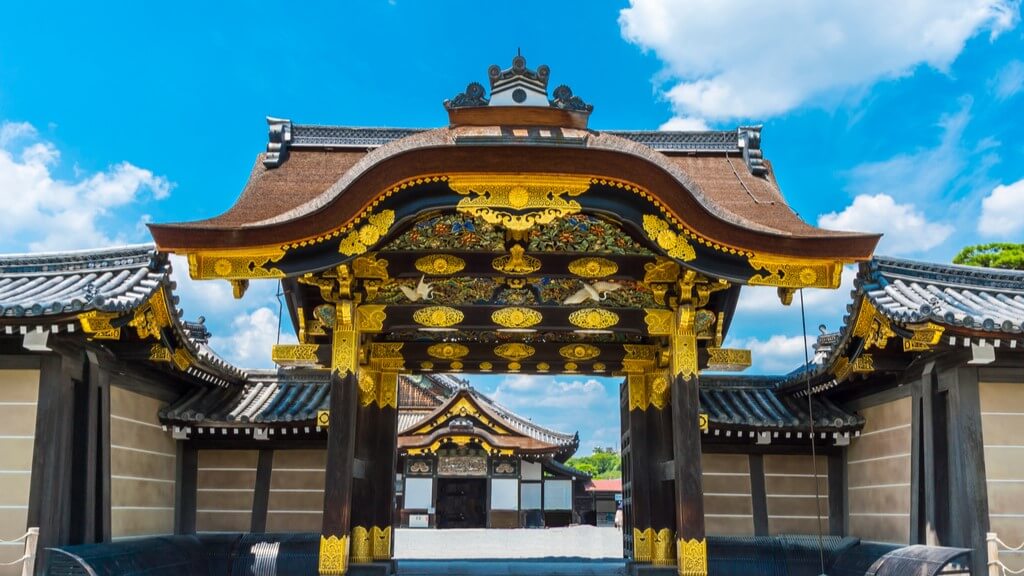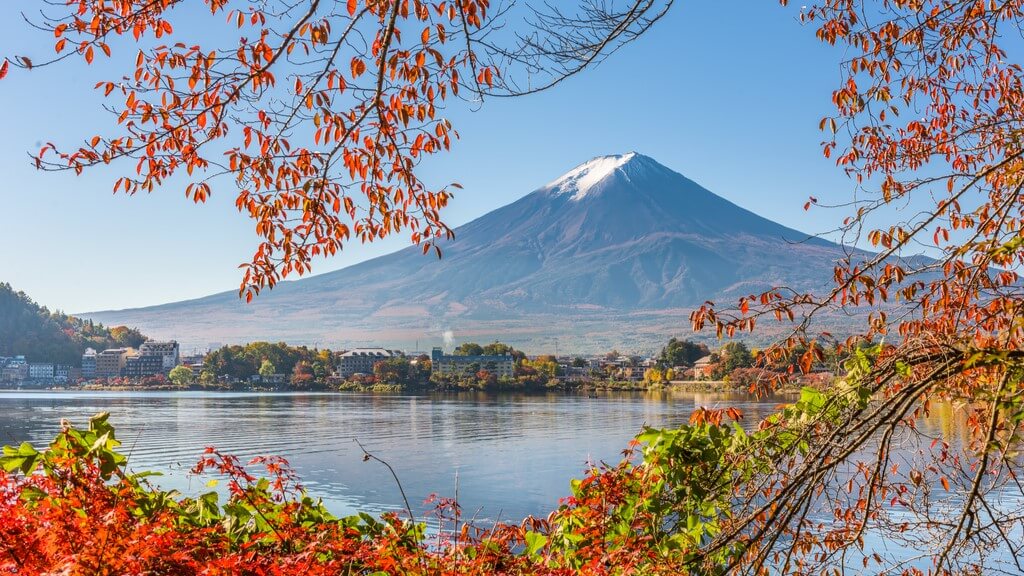Its not just another destination it is a country that will catch you and allow you to feel the want to explore more and more. This country has centuries of history, samurai’s fought for their land and status in society, Geisha's entertained their guests, castles were built and war struck but all of this has established the traditions and culture of Nippon. A country with such amazing hospitality, clean and safe streets, an abundance of flora and fauna with vending machines every few metres. It is a convenient and stunning destination and excellent choice for travel that you can visit on our 8 day Highlights of Japan tour.
What a great way to see snap shots and take in some of Japan’s biggest and best cultural and traditional cities?
So what excellent attractions can you see on our Highlights of Japan tour?
1. Todaiji Temple, Nara, Japan

Todaiji Temple (Great Eastern Temple) located in Nara is one of the largest temples in Japan and houses the biggest bronze Buddha (Daibutsu) statue in the world inside! Standing at 15 metres high it is an all wooden building reflecting a complex combination of Buddhism and politics in Japan and was founded in the Nara era around the 8th century.
Emperor Shomu and Empress Komyo at the time spread Buddhist doctrines and political policies to maintain their rule within Nara. Shomu ordered many temples and monasteries to be built throughout Japan’s 66 provinces at the time. The national system of monasteries at the time, known as the Kokubun-ji, was under the jurisdiction of the new imperial Todaiji Temple in the heart of Nara.

You will be truly amazed at the articulate carving and marvelous features of the Buddha with its peaceful and calm face surrounded by Shaka and other Bodhisattvas that are of great importance within Buddhism. Other features such as the fleshy figures with swelling chests, full faces and swirling drapery are all typical of the elegant naturalism of the Nara era. Today’s statue is a 17th century replacement statue and has an annual ritual cleaning ceremony every August.
Todaiji’s history is fascinating and can be said to be one of the first centre's of Buddhism in Japan. Day 3 of our Highlights of Japan tour will allow you to see Todaiji Temple and the great bronze Buddha (Daibustu)!

An excellent attraction to learn about religion, politics and the history behind such a significant area in Japan.
2. Arashiyama, Kyoto, Japan

Arashiyama district on the western side of Kyoto is an excellent representation of Japan’s history, culture and nature. Arashiyama has become a significant destination since the Heian period, when the local nobles would go there to enjoy the natural settings and take in the fresh air. Arashiyama is particularly stunning in cherry blossom season (early April) and during autumn (second half of November) great for you to take those ‘Japan’ photos you have always wanted to take.
As you reach Arashiyama you will make your way from the coach or train station to this iconic bridge. This is Togestukyo Bridge and it is one of Arashiyama’s most iconic landmarks. Built in the Heian Period (794-1185) this bridge has attracted many visitors and the combination of the stunning nature in the background is the reason why it is an iconic attraction. Stop by here with your tour group and then head onto more of Arashiyama’s well known and traditional sites.

Arashiyama has a unique bamboo forest called Sagano Bamboo forest, here you can stroll through the groves and feel like you are in another world as the bamboo sticks sway from side to side. Walk together with your group through the paved walkway and enjoy the famous “Bamboo Alley”. Follow your tour guide and learn about the history of this area and the importance it has within Japanese history and traditions.

Book our Highlights of Japan tour to see this excellent and stunning attraction, Sagano Bamboo Forest on Day 4 of the itinerary!
3. Nijo Castle, Kyoto, Japan

Nijo Castle also known as Nijojo is a neutral and calm castle built around 1603 under the residence of Tokugawa Ieyasu, the first shogun of the Edo period (1603-1867). After the Tokugawa Shogunate fell, Nijo Castle was opened as a public historic site. Nijo Castle’s palace architecture are representative of Japan’s feudal eras and it became a UNESCO World Heritage Site in 1994.
Nijo Castle has three significant aspects that are quite interesting once you enter the Karamon Gate. The Honmaru of the castle was the main ring of defense and the Ninomaru was the secondary ring of defense with some natural gardens surrounding them. The whole castle is surrounded by high moats and stone walls just like most castles throughout Japan.

Karamon Gate is an interesting Chinese styled gate and entrance to the Ninomaru where the castle’s main attraction, the Ninomaru Palace is located.
Ninomaru Palace was the main residence of the shogun during his visits to Kyoto! It has a traditional style Japanese garden with a pond, stones and pine trees, all significant features of Japanese gardens. Japanese gardens are not only places for social gatherings or expressions of art and relaxation they are a place for people to get up close with nature and breathe in the fresh healthy air.

Visit Nijo Castle on Day 4 of our Highlights of Japan tour an excellent 8 day trip to see all Japan has to offer!
4. Mount Fuji, Japan

Mount Fuji or known as Fujisan) is 3776 metres high, one of Japan’s highest mountains. Mount Fuji is an active volcano and stands on the border between Yamanashi and Shizuoka Prefectures. An outstanding image for the land of the rising sun many writers and painters have produced creations and art over centuries. It is located 2 or 3 hours away from Tokyo and can be accessed by local buses and trains.
Day 5 of our Highlights of Japan tour will take you to Mount Fuji 5th Station known for being 2,300 metres above sea level and offers a spectacular view of the Fuji Five Lakes below. After that your professional tour guide will take you to Lake Ashinoko a crater formed by Mount Hakone around 3,000 years ago and relax on the Hakone sightseeing cruise to see more breathtaking views of Mount Fuji.


See an excellent representation of Japan at the outstanding Mount Fuji area on our 8 day Highlights of Japan tour! A tour for you and your family to experience traditional and ancient historical architecture and natural surroundings.
5. Asakusa Kannon Temple, Tokyo, Japan

Asakusa Kannon (Sensoji) Temple, is a Buddhist temple located in the heart of Tokyo at Asakusa. Bright red and many people coming in and out it is one of Tokyo’s most oldest and grandest temples. Completed in 645, this unique temple was built close by to the goddess of Kannon. Before reaching the temple visitors will enter through Kaminarimon gate, the outer gate of Sensoji (the symbol of Tokyo).
Together as a group on Day 6 of our Highlights of Japan tour we will make your way to Nakamise Shopping Street, a street full of various shops selling local foods, drinks and souvenirs. This shopping street has been around for several centuries and is over 200 metres long.
After that your professional tour guide will enter with you into Sensoji Temple’s main hall and a five storied pagoda, one of Tokyo’s oldest and outstanding architectural and traditional marvels.

Try praying in a traditional Japanese style at this ancient architectural wonder in the heart of Tokyo on our 8 day Highlights of Japan tour! Inquire with us if you would like to visit these highlights and more!
Traditions, history and religion are all excellent parts to Japan’s culture along with the people and the hospitality.
Contact us at info@tomatotravel.com.au, through our online chat ring us on 1300- 057- 680 for information in regards to our Highlights of Japan tour, the attractions listed here or any of our other Japan products or services.
Stay tuned here for future blogs...
We hope you enjoy your Monday and the rest of the week! We will be back next week.
Tomato Travel Blogger | 2019
